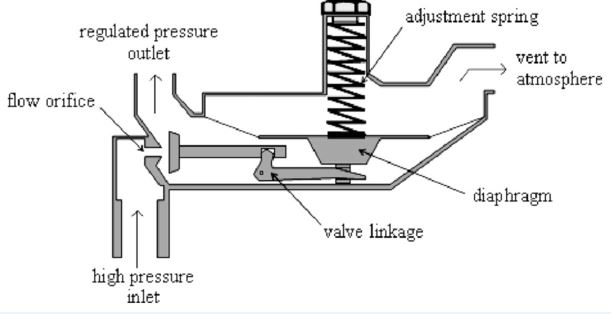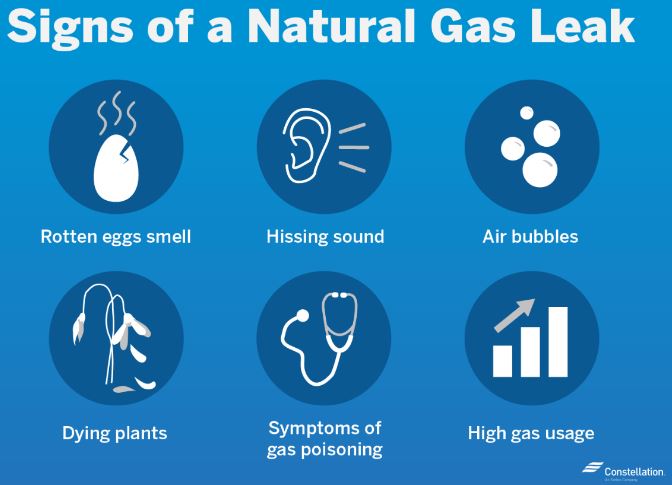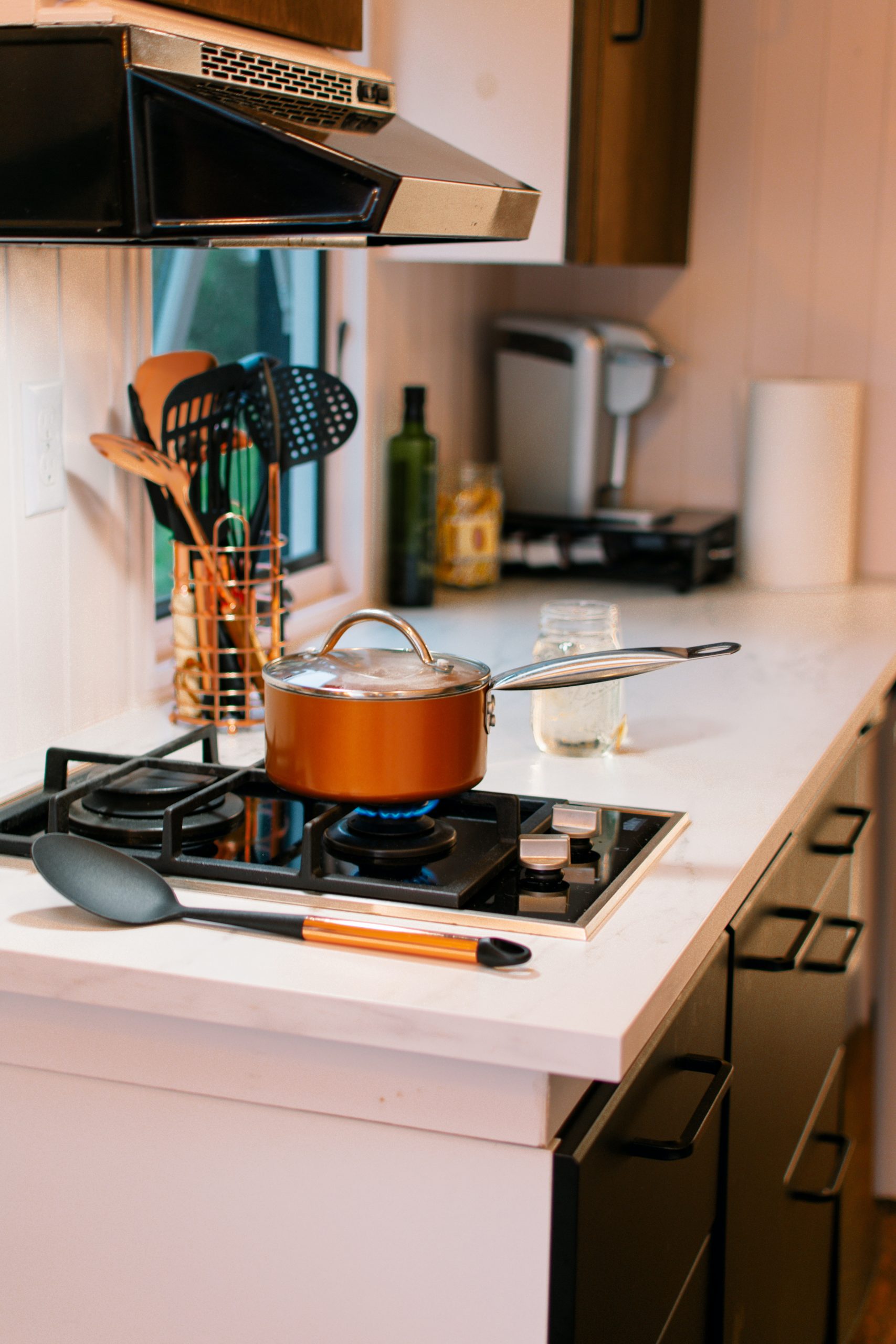All about Propane and Natural Gas

All about Propane and Natural Gas
I’ve lived in the city, and I live (now) in the country. In both places, there was a gas line coming into the house that could be used for gas appliances like my stove, dryer, water heater, furnace, etc. I, like most people, don’t give the gas or these pipes a thought beyond paying the monthly bill, until there’s a leak or a catastrophe. How can you keep from being on the 6 o’clock news? By being aware of how these fuel gasses are supplied, and what to look out for!
I first encountered the difference between natural gas and propane when selecting appliances. You need to know what gas comes in to your home in order to select the right appliance! Here’s a general rule: if your gas comes from a city source (pipe coming out of the ground with a meter on it), it’s usually Natural Gas. If you have a tank that needs to be refilled periodically, it’s usually Propane. Chemically, natural gas occurs “naturally” in the earth, but must be cleaned. During the cleaning process, propane is extracted. Propane provides more than twice the heating value of natural gas (2,500 BTUs vs. 1,000 BTUs) per cubic foot, so natural gas costs at least a third less than propane. Although some prefer natural gas to propane for grilling, it’s difficult to tell the difference between these two gasses. They are both colorless and odorless, so utilities companies add a odorant (a chemical called mercaptan) so that leaks are easily detected. Mercaptan is toxic and flammable, but at the levels that it is used to odorize gas, it’s no more harmful than the natural gas or propane. (The nose can detect mercaptan at a 1.6 parts per billion, and the typical range of odorants in natural gas ranges from 0-10 parts per million). (GPL Odorizers) Here are some facts about these gasses:
Propane:
- Is also called “bottled gas”, it’s pressurized between 100-200 psi and becomes a liquid at this pressure (called liquified petroleum gas, or LPG, or LP for short).
- Like natural gas, propane is one of the cleanest burning fossil fuel products, releasing negligible amounts of emissions. When burned, it leaves no ash and produces practically no sulfur oxides, particulate matter, or mercury emissions. On the other hand, burning propane produces carbon dioxide, a cause of global climate change, and it also emits nitrogen oxides which are key ingredients in the formation of urban smog and ozone. (FactsAboutPropane.pdf)
- Is used for powering trucks and forklifts operating inside warehouses, so that air quality is preserved for workers.
Natural Gas:
- Is most often compressed or liquified for transport, however the pressure required to do so is much higher than propane, so transportation and storage tanks are heavier.
- Is available in some communities and is delivered by pipeline to homes. Unless an emergency or planned work causes the pipes to be shut down, it’s always available.
- Is mainly methane—a strong greenhouse gas. The U.S. Energy Information Administration (EIA) estimates that in 2021, U.S. CO2 emissions from natural gas combustion for energy accounted for about 34% of total U.S. energy-related CO2 emissions. (eia.gov)
Many appliances can use either natural gas or propane, but the combustion orifices must be changed to accommodate one or the other. You can purchase the conversion kit yourself, but due to the hazards of incorrectly installed parts, a licensed professional (plumber or appliance repair technician) should do the conversion. (bobvila.com) For this reason, it’s often better to purchase the right appliance for your gas from the start, even if it is listed at a slightly higher price than appliances configured for the other gas (a lesson I learned the hard way!). For example, the burners for gas dryers are often deep inside the appliance, requiring the removal of many parts.
What’s that flying saucer-looking thing?
Both natural gas and propane are stored at higher pressures than the appliances use, so the pressure must be reduced before it comes into the appliance, and most often before it comes into your home. The flying-saucer looking gadget is a “regulator” which reduces the pressure. High -pressure gas comes into the underside of the circular disk, and is slowly released into the downstream side, governed by a diaphragm inside the disk. The size of the diaphragm sets the correct pressure for home use. Because gas can have impurities like rust, condensation, and dirt in it, gas pressure regulators are supposed to be changed out every five years or so. They are designed to shut the gas flow off if the unit fails, which is good for your home. Each regulator is typically stamped by the manufacturer with its date of production. (eatingexpired.com) Here’s a really interesting video showing how the regulator works. Gas pressure regulators are designed to be installed close to the end use of the gas (ie, right outside your home or next to your gas barbeque grill). Here’s something else I did not know: if you live in an area that gets a lot of snow, make sure to gently clear it off your gas meter/regulator, so that the vent on the regulator does not get blocked. This is the reason that regulators should not be painted–you don’t want to block that vent.

Source: ResearchGate.com

Source: Minnesota Department of Public Safety

Source: The Dallas Morning News
Outside, the gas meter, shutoff valve and regulator are usually located next to the home, but occasionally they are located closer to the street (see above photo of a meter in a parking lot). If this is the case, be proactive and ask your service provider to install a guard around it! Collisions and damage by vehicles happens more often than you think.
Because they come into the home under pressure, both natural gas and propane have a risk of leaks from piping or appliances. If a new gas appliance has been installed recently in your home, or any maintenance has been done on your gas pipes, be especially vigilant of the smell of gas or any of the following signs. One exception is if you have a propane tank, and the gas gets low in the tank. In this case, the smell is actually designed to let you know it’s time for a refill: propane gas contains a few chemicals. One of these chemicals condenses out and collects as a liquid in the bottom. When the tank is low, the reduced pressure causes the odorant to evaporate and makes a strong gas odor. Normally, gas companies recommend not letting your tank go below 20%. If it’s refilled at that point, the gas smell should dissipate within about 2 hours. (Wheat Energy Services) If the gas is allowed to run out completely, a pressure test is required by the National Fuel Gas code, because joint compound used on the pipes may contract and cause leaks.

Source: Constellation.com
If any of these are apparent, start investigating immediately. If the smell is strong, leave the area immediately. If the gas smell is faint, you may wish to try to locate the source by smell and a bubble test. Do not attempt a repair. (Five Common Home Gas Leaks You Should Know About)
If inside, turn off any stove or oven burners that are on; open windows and doors
Leave the area; go to the home of a friend or neighbor a safe distance away (Staying in your home or near the leak to make a cellphone call could spark an explosion)
Call a licensed plumber, your gas company, or 911 to report the smell (first responders often arrive before gas company technicians)
Do not turn any electrical switches on or off
Do not use any kind of telephone, garage door opener, doorbell or even a flashlight
Do not smoke, light a match or lighter
Do not stop or start a nearby vehicle or piece of machinery
Do not attempt to shut off the natural gas valve
Of course, you know the rotten eggs smell. If there are no rotten eggs around, suspect a leak! If you’ve just connected a propane tank to your gas grill, make sure to turn off the valve and check hose connections, let air circulate in and around the grill for five to ten minutes, and try again. Hissing sounds are a sure sign of gas escaping, so try to turn off the supply (by hand, without using tools) if possible. You can also use a mixture of water with a few drops of dish soap in a spray bottle to find the leaky connection: simply spray it on the connection, crack open the gas valve, and look for bubbles.
I used to think that natural gas leaks were rare. However, since the supply lines are buried, water eats away at the pipes and shifts in the ground from drought, construction and earthquakes can cause cracks and leaks as well. Apparently there are gas leaks everywhere, as this article points out, but most gas companies only fix those that are large or close to structures. A leak can show up as air bubbles coming up through a mud puddle, or it can kill houseplants and outdoor plants. The presence of natural gas prevents a plant’s roots from absorbing oxygen and can lead to wilting. Natural gas leaks can also cause smaller-than-normal leaves on trees, wilted plants and yellowish patches of grass. (Constellation.com) One customer in northern California planted successive blueberry bushes that died each time he planted them, without knowing there was a gas leak on the edge of his property. (inewsource.org)
Although they may be signs of other types of illness, headaches, dizziness, fatigue and nausea are all symptoms of natural gas exposure. If it is a gas leak, it will probably affect most if not all of the people in the home. It’s very dangerous, because eventually the gas will cause suffocation and death! If your family is experiencing these symptoms, leave the home and call 911.
Finally, if your monthly gas bill is unusually high without the presence of very cold weather, suspect a leak and let your service company know as soon as possible.
Even if your gas meter has not been struck by a vehicle, tool or tree, the meter or associated piping could still be leaking. Dan Thomsen, whose company Building Doctors focuses on energy efficiency, said on about 25 percent of the homes he surveys, he finds a gas leak somewhere. (inewsource.org) Here are some of the most common places that natural gas or propane can leak directly outside, or inside the home (Five Common Home Gas Leaks You Should Know About):
Gas riser – The gas riser is the pipe that emerges from the ground to connect the gas supply to your gas meter.
Gas regulator – the disc-shaped device near your gas meter that controls gas pressure going into your home.
Fireplace valve – the valve you turn with a removable key to turn on and off the flow of gas to a gas fireplace.
Pilot lights – these ignite the gas to produce a flame when you want to cook, heat your home or get hot water.
Joints and fittings – any visible joint or fitting that may not be sufficiently tightened.
Natural gas and propane make living easy and very convenient; after all, many appliances that run on gas will still work when the electricity is out! However, supply and use of these gasses requires care and vigilance. To help ensure that no leaks go undetected, you can also purchase and install a natural gas/propane monitor for your home (they are NOT the same as carbon monoxide monitors). These monitors should be installed near the appliances that use the gas; however, propane is heavier than air so the monitor should be mounted near the floor, while natural gas is lighter than air so the monitor should be mounted at a height above the door and window openings. Change the battery(s) whenever you change your smoke alarm batteries, and you should be good to go!

Photo by Andrea Davis on Unsplash






